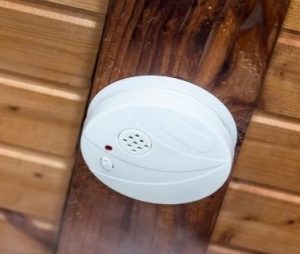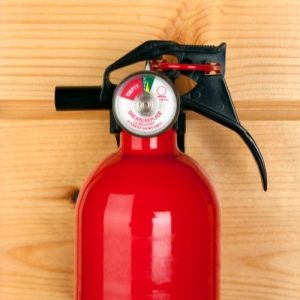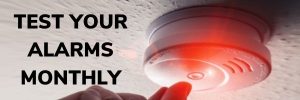2021-Jun-01
Fireproof Your Life: The Basics
Another summer will fast be upon us. And with that should come thoughts as to what we can do to protect our little pieces of paradise. Here are some of the basics that you really should undertake to protect your property, and more importantly, your family and guests.
 The fire season is starting earlier, lasting longer and is more intense. Wildfires can spread at an astonishing rate. Forest fires can speed through a crown of trees at 15 kilometers per hour. Remember that while wildfires can be a natural phenomenon started by lightning, 90% of all wildfires that start within 3 kms of our communities are attributed to human activity. The best protection against loss, damage or injury is prevention. But there are also things you can do to reduce the risk should a wildfire occur.
The fire season is starting earlier, lasting longer and is more intense. Wildfires can spread at an astonishing rate. Forest fires can speed through a crown of trees at 15 kilometers per hour. Remember that while wildfires can be a natural phenomenon started by lightning, 90% of all wildfires that start within 3 kms of our communities are attributed to human activity. The best protection against loss, damage or injury is prevention. But there are also things you can do to reduce the risk should a wildfire occur.
The FireSmart Program
The FireSmart Homeowners’ Manual prepared by the Ministry of Natural Resources and Forestry provides you with information and ideas for steps you can take to reduce the risk. Research proves you can make a difference to your cottage’s chances of wildfire survival.
Interestingly, more than half of the buildings destroyed by wildfire are ignited by blowing embers, also called firebrands. The FireSmart suggestions are designed to protect against surface fire as well as the firebrands igniting your cottage. There are two areas of focus. First, is the area surrounding your cottage which is called the Home Ignition Zone. Second, are things you can do to your home to lessen the chances of ignition. Watch the following videos:
Preparing the Home Ignition Zone:
FireSmart Begins at Home
Can Your Home Survive a Wildfire?
The written FireSmart manual can be found here. This contains more valuable information. Take the home & site hazard assessment on pages 11 and 12. Find out if your fire hazard level is low, moderate, high or extreme. It will highlight your areas for concern and, hopefully, any action you should take.
Please take the time to watch the videos and peruse the manual. The short amount of time it takes could save your property.
Tips
Remember we said that the best protection against fire is prevention? Here are two tips lists that have been compiled that give valuable ideas which, if followed, could prevent a fire. We like to think we know how to prevent fires, but it is probable that there are some things we do that are dangerous. And even if we do follow these best practices other family members and guests might not. Please print them off and post them where all can see.
Detectors
 Detectors are another key element in the protection of lives and property. The Ontario Fire Code considers a cottage a residence and as such requires smoke alarms on every storey and outside all sleeping areas. Its also a good idea to have them near possible sources of ignition.
Detectors are another key element in the protection of lives and property. The Ontario Fire Code considers a cottage a residence and as such requires smoke alarms on every storey and outside all sleeping areas. Its also a good idea to have them near possible sources of ignition.
Carbon monoxide alarms should be installed in all residences with fuel-burning appliances. Follow the manufacturer’s installation instructions. The primary location for installation is outside any sleeping areas. Additional carbon monoxide alarms can be installed near any fuel-burning appliance within the residence.
Test all smoke alarms and carbon monoxide alarms; replace batteries and alarms, as needed and recommended.
Install a propane leak alarm at floor level, no more than 6 inches above the floor or lowest level to alert you in the event of a propane leak. Propane is heavier than air and propane vapours tend to pool in low spots.
Extinguishers
 Fire extinguishers are your key to early containment and perhaps a safe escape. Have them in your kitchen, near fireplaces and anywhere fire may break out. Also keep one near the exit door as an aid to evacuation. Know how to use them. Most residential fire extinguishers discharge in 8-10 seconds with a range of only 2 to 3.5 metres (6 to 10 feet). They should only be used to extinguish small, contained fires or to reduce a fire sufficiently to allow escape.
Fire extinguishers are your key to early containment and perhaps a safe escape. Have them in your kitchen, near fireplaces and anywhere fire may break out. Also keep one near the exit door as an aid to evacuation. Know how to use them. Most residential fire extinguishers discharge in 8-10 seconds with a range of only 2 to 3.5 metres (6 to 10 feet). They should only be used to extinguish small, contained fires or to reduce a fire sufficiently to allow escape.
Different extinguishers fight different types of fire. Discuss your needs with the retailer and follow manufacturers instructions on how to use them. ABC extinguishers are appropriate for paper, wood, trash, liquids, small grease and electrical fires. Keep in mind that the dry powder chemical in the extinguisher can pack down in the bottom over time. Once a month check the gauge for pressure and turn it upside down and hit the bottom sharply with your hand and then shake well.
Have a plan
Every household needs a fire safety plan and all members of the household need to practice the plan. Fire experts say people could have less than two minutes to escape a burning structure once the alarm goes off. Your priority is to get everyone out of danger and having a well practiced plan is the best way to do this.

Some helpful tips for designing your plan:
It doesn’t take long to prepare a plan and can be a good family project. Making a plan could include drawing a map of the home and marking two exits (doors and windows that work) from each room. For second floor bedrooms this may include a hanging escape ladder.
- Assess the needs of everyone in your home and identify who would require assistance and how to provide that
- Make sure each bedroom has a flashlight and that it works
- Make sure everyone knows the alarm sound
- Make sure everyone knows exactly what they are supposed to do when an alarm sounds
- Have a predetermined safe meeting place outside and make sure that everyone knows to go there
- Make sure everyone knows what information to relay to emergency services. Consider using the what3words app so everyone knows what the 3 words are and can relay them to the 911 operators.
PRACTICE THE PLAN! And make changes if necessary. Practicing will point out any deficiencies in the plan.

Consider buying a fire pump. Having it may mean you could suppress a fire before help could arrive.
Bonus tip. Hopefully you never face the tragedy of having lost your property to fire. But if you do then having the right insurance in place can help you to move forward. Review your policy to refresh your memory on what’s covered and to what level. With the spike in cost of building materials, replacing your cottage just got a whole lot more expensive. You should also consider personal liability insurance.
Learn more about insurance here.
